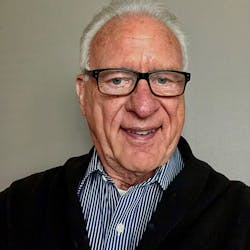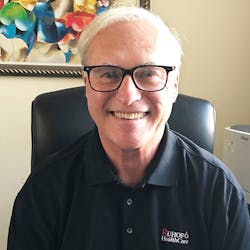ANSI/AAMI changes face, force of sterile processing via ST91 update
When the American National Standards Institute (ANSI) and the Association for the Advancement of Medical Instrumentation (AAMI) wanted to improve sterile processing practices and procedures as well as protect patients by updating the ST91 guidelines, the collaborating ANSI Endoscope Reprocessing Working Group and the AAMI Sterilization Standards Committee knew any wholesale changes would instantaneously spur discussion and debate.
And now.
Mission accomplished.
With the release of this comprehensive guideline update, Healthcare Purchasing News wanted to examine how ANSI/AAMI’s accomplishment would affect sterile processing practices and operating room procedures, as well as explore how the updated ST91 will improve performance, quality, safety and workflow.
Consequently, HPN asked a small group of Sterile Processing & Distribution (SPD) company executives to share their impressions and predictions about the “new world order.”
Step in the right direction
“ST91 is another incremental step to refine and improve the safety, quality and efficiency of reprocessing endoscopes, and to a larger extent all small-lumen medical devices. Since hospitals are at varying levels of processing sophistication and process improvement, this new guidance may require both capital equipment upgrades and new staff training for many.
“On the positive side, this guideline update urges us forward in a good direction.
Refining the guidance for each step in the reprocessing of endoscopic devices will help providers to take the next steps toward improving their processes, equipment and training so they can achieve a new level of safety and compliance.
“Each step in the endoscope reprocessing cycle must undergo ongoing evidence-based improvements to assure optimal outcomes for patients. Cenorin focuses on the reprocessing step of thoroughly drying these devices, in particular small-lumen devices including bronchoscopes, cystoscopes and robotic devices. The channels in these important devices provide an unfortunate opportunity for residual organisms and moisture, both of which can reduce the effectiveness of later reprocessing steps or even cause a processing cycle to abort.”
Richard Radford, CEO, Cenorin LLC
More costly but necessary
“AAMI ST 91 is going to cost healthcare institutions more money and take more time to process scopes because reprocessed endoscopes require proper handling from point of use, through all cleaning steps, and on to transport for use. This is how we make sure we’re doing everything we can to provide properly reprocessed scopes that are safe to use on patients.
“Healthcare personnel understand that reprocessing is not a 100% guarantee that scopes will truly be patient-ready, despite the best efforts of the reprocessing staff. Infections by cross-contamination are rare, but patients are aware they are possible and have begun requesting single-use devices. I believe standardization of the guidance in handling these scopes will have a positive impact on performance, quality and workflow. SPD personnel are already used to working with certain standards and processes, so this standard is an enhancement to what they pretty much already do.
- Guidance on transportation of scopes (how to keep the devices from drying during transport).
- Manual disinfection is no longer recommended due to the variability/inconsistency personnel responsible for the process.
- Point-of-use [treatment] (formerly precleaning), cleaning and delayed reprocessing guidance.
- ‘Significant revisions’ to leak test guidance, including the regular testing of automated leak testers.
- Added a designation of ‘high-risk’ endoscopes.
- Strengthened wording on which scopes should be sterilized and which can be high-level disinfected.
- Guidance that single-use biopsy port caps and valves should be used when available and reusable ones should undergo sterilization or HDL after use.
- Recommends formal training and competency verification ahead of a technician’s first solo reprocessing assignment, as well as certification for all personnel in flexible endoscope processing.
- Requires monitoring HVAC systems and water quality for automated endoscope reprocessors.”
Sharon Ward-Fore, MT(ASCP), CIC, FAPIC,
Infection Prevention Advisor, Envista
‘Wake-up call to action’
“The overall ‘call to action’ inherent in the new ST91 is purposeful embedding of quality control at multiple steps of processing endoscopes. Significant effort was made to ensure this was a user-focused document, providing guidance on best practices to enable quality processing – and, in turn, protect patients. Clinical investigations and research from recent years guided the recommendations and serve as the sobering ‘wake-up call’ for why such recommendations are necessary.
“Notable areas of focus in the new standard include:
Emphasis on certification, training, and competencies
“For those facilities previously lacking such embedded quality control steps, first impressions may be that any additional steps add to turnround time and costs. However, unless we look, we will not know; and unless we measure, we cannot evaluate how we are doing. Those are basic principles behind any successful operation. The focus also always needs to remain on the end result – producing an effectively cleaned and disinfected or sterilized endoscope to the next patient.”
John Whelan, Clinical Education Specialist, Healthmark Industries
Gearing up
“For facilities that follow AAMI standards, the ST91 updates may add time to the reprocessing procedure for leak testing, drying time and cleaning verification depending on endoscope risk. CS/SPD departments should make trial reprocessing runs based on the new standards to determine how the updates may impact their specific facilities. There are products on the market that already provide built-in features that address the guideline changes.
Melinda Benedict, Director, Infection Prevention and Control, Olympus Corporation of the Americas
Follow evidence, embrace science
“Adding additional guideline recommendations poses the question: Are the recommendations backed by evidence-based science? The idea that a recommendation can point out an improvement in a best practice is extremely important. However, it is critical that evidence, education, staff training and effective implementation can support the change.”
Ron Banach, Director, Clinical Training, Ruhof Healthcare
Work in progress
“I find that the biggest changes impacting both SPD and endoscope processing areas are the new requirements for cleanliness testing after manual washing and 10-minute drying times. Both requirements impact the reprocessing of flexible endoscopes by adding procedures that take time. Another important change has to do with the requirement to report damage. Section 7.4.8 d) states, ‘Report the leak test failure per organizational policy and procedure, including the endoscope product identification and traceability information.’
“ST91 calls for cleanliness testing after each use for ‘high-risk’ endoscopes and the verification of all other endoscopes on a statistically significant frequency: ‘3.31 High-risk endoscopes and/or those that are of complex design (e.g., duodenoscopes, linear ultrasound (EUS) endoscopes, bronchoscopes, endobronchial ultrasound (EBUS) endoscopes, ureteroscopes, cystoscopes and as determined by the facility) shall be monitored with cleaning verification tests after each cleaning. Manual cleaning of flexible endoscopes that are not determined to be high – risk should be verified using cleaning verification tests when new endoscopes are purchased and at established intervals (e.g., at a statistically significant frequency based on the number of procedures performed).’
“I believe that the requirement for cleanliness testing is a move in the right direction. The lumen of a flexible endoscope is very small and even with brushing and flushing bioburden can remain in the channel. The use of a test to detect organic materials will assist in ensuring that the endoscope is clean. My question is shouldn’t we test all flexible endoscopes after each use? Doesn’t every patient deserve to have a clean and properly processed endoscope? The endoscope must be thoroughly cleaned prior to sterilization or HLD.
“Drying the endoscope makes scientific sense. Water is needed for growth of all living organisms. Drying the endoscope as quickly as possible helps prevent bacterial growth. The challenge with the new standard is that first, most facilities do not actively dry the lumens after processing. Most simply hang the endoscope and allow it to drip dry, thus this is a significant change. Second, the requirement for 10 minutes adds significant time to the process and some departments struggle to keep up with the workload without this new requirement. Lastly, drying takes space and the equipment to perform the function. It is not efficient for a technician to use an air gun or similar tool to dry lumens. An automated system that connects to the endoscope is needed to ensure that the process is effectively administered and timed for the appropriate cycle. Facilities will need to purchase flexible endoscope drying cabinets or convert to storage systems that actively dry the endoscope.
“‘8.2.5.1 The endoscope and its components should be dried after completion of the cleaning and disinfection process. Flexible endoscopes with channels should be dried for a minimum of 10-minutes with pressure regulated force instrument air or a minimum of HEPA – filtered air.’
“Many processing departments do not have medical air or HEPA-filtered air available, thus this requirement will force those facilities to add this tool. In addition, without automating the process, there is a great chance that staff will not perform this process for the required 10-minute period. In addition, it will be a significant drain on technicians’ time if the process is not automated. The extra 10 minutes required for this process, if all manual, could cause delays in reprocessing in busy departments. Or with high-level disinfected endoscopes, most endoscopy suites simply hang the endoscopes after processing them in an AER. An absorbent towel is placed in the bottom of the storage cabinet to absorb any water that drains from the endoscopes. For sterilized endoscopes, the drying process is now performed primarily to prevent sterilization failure as the machines are very sensitive to moisture and in addition moisture interferes with the sterilization process. To be successful, management will need to implement training, provide the appropriate space and tools needed for the air drying and enforce recording drying times. Unless the process is automated, this will be a very challenging task for management.
“It is important to recognize that both changes impact SPD and GI endoscopy processing areas as small diameter flexible endoscopes (e.g., ureteroscopes, cystoscopes, etc.) are impacted by these changes.
“Another change in AAMI ST 91 is for the reporting of leak test failures. Almost every IFU states that the endoscope should not be used on a patient if it leaks. The reason for this is that only the exterior of the endoscope and the interior of the lumens are rendered sterile or HLD through reprocessing. When a leak forms, the interior of the endoscope is exposed, and this space is not clean, and [therefore] cannot be considered sterile or HLD even if it is exposed to sterilant. (Those endoscopes that are sterilized by hydrogen peroxide or ozone gas require a vent port be attached. This vent port allows the sterilant gas to penetrate the interior of the endoscope. The vent cap is used to allow the pressure within the endoscope to equalize during the sterilization process. Without the vent cap, the endoscope cover could tear due to the pressure inside the endoscope. While the sterilant enters the interior of the endoscope, the interior is not considered sterile because it is not an area that is or could be cleaned).
“Leak testing should be performed prior to cleaning. It is also performed in AERs. Both processes occur prior to the use of the endoscope on the patient. Post-case if a leak is detected the endoscope must be immediately taken out of service and sent for repair or replacement. Leaks typically are a result of accessory devices used with the endoscope (biopsy forceps, snares, laser fibers etc.), improper handling (bending, torquing) improper care (sharps, heavy equipment placed on or near the endoscopes and general wear and tear (parts fail due to age condition).
“In most cases the damage occurs during use. Currently, physicians have no way of telling if the endoscope that they are using has a leak. When a leak occurs, the endoscope can no longer be considered sterile or high level disinfected and should not be used on a patient from that point in time when the leak occurred. Notification of a leak post case is not a perfect solution because the patient likely was exposed to a non-sterile/ non-high-level disinfected endoscope which is a health risk to the patient. The new standard to report and record leaks could assist a physician in the treatment of their patient and bring heightened awareness of monitoring those patients that were exposed to a non-sterile/non-high-level disinfected endoscope during a procedure.
“Lastly, a much more difficult task for hospitals and endoscopy centers pertains to the need to separate endoscope decontamination from the sterilization process. Many GI endoscopy reprocessing departments perform all functions in one small room. While grandfathered in due to facilities constraints, due to the high risk of cross contamination and the fact that the air flow is incorrect, hospitals and surgery centers should work to correct this critical flaw in the processing of GI endoscopes. This practice would never be allowed for an SPD, and it should not be allowed for GI endoscope reprocessing areas. Both contain biohazardous materials and have the risk of harm to staff and patients. For this reason, there should be no difference in requirements between and SPD and a GI endoscope reprocessing area.”
Gregg Agoston, Vice President, Business Development, SPD Transformation Services, SpecialtyCare
Continue reading …
AAMI redefines, revamps sterile processing practices via ST91
Who owns pre-treatment at point-of-use
Disposables/single-use devices vs. hybrids – which leads by 2035?
Strategies, tactics for high-quality endoscope reprocessing
Forget about using SUDs; what if you no longer could make them?
How might ‘right to repair’ regs impact healthcare?
How to approach patient safety gap with flexible endoscopes

Rick Dana Barlow | Senior Editor
Rick Dana Barlow is Senior Editor for Healthcare Purchasing News, an Endeavor Business Media publication. He can be reached at [email protected].











